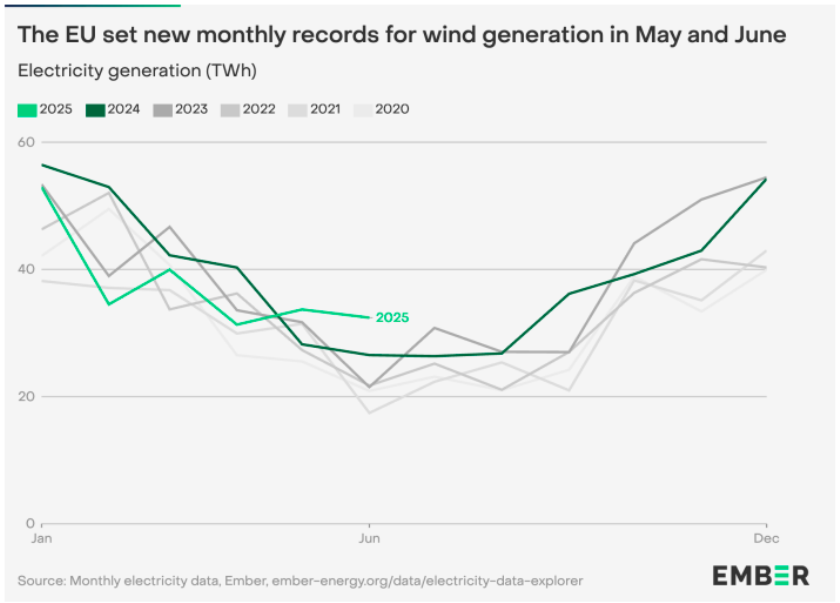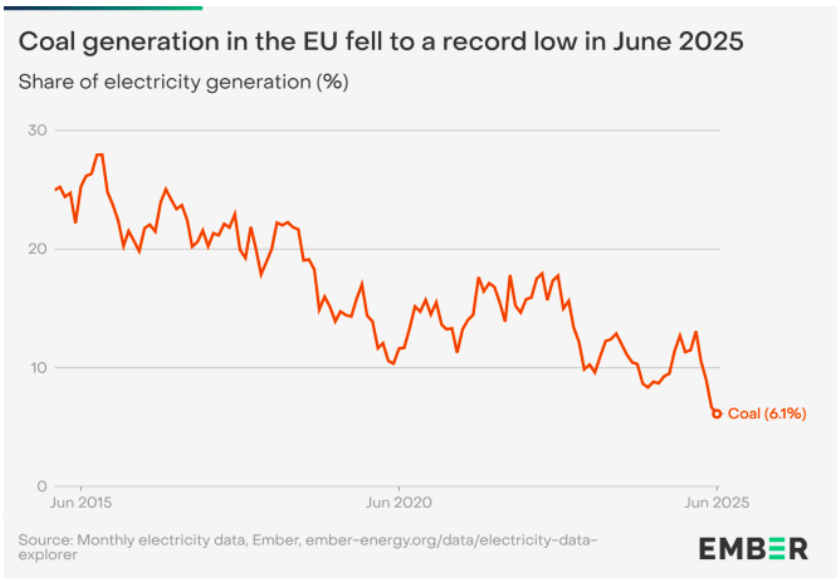Europe’s energy transition gained major momentum in June 2025 as solar power became the largest single source of electricity in the European Union for the first time. Solar power has generated 22.1 percent (45.4 TWh) of the EU’s electricity — surpassing nuclear and wind.
Thirteen EU countries hit all-time highs in solar generation in June, powered by years of consistent solar investments and a particularly hot, sunny start to the summer, Ember said in its report. These conditions helped solar step up during periods of peak demand caused by June’s heatwaves. Nuclear followed closely behind with a 21.8 percent share, while wind generated 15.8 percent (32.4 TWh), marking its strongest June on record.
“Europe is becoming a solar powerhouse. European nations are harnessing the abundant resources of sunshine and wind like never before. The growth of low-cost renewables is gradually getting Europe’s energy system off the rollercoaster of fossil energy prices,” Chris Rosslowe, Senior Energy Analyst, Ember, said in a report.
“The big opportunity now comes from adding battery storage and flexibility to extend the use of renewable power into mornings and evenings, where fossil fuels still set high power prices,” Chris Rosslowe said.
Wind

Wind power’s performance this summer reflected a notable rebound from earlier in the year when wind conditions were poor. Improved wind speeds combined with continued expansion in capacity — including new offshore wind projects — helped wind deliver its highest ever output for May and June, at 16.6 percent and 15.8 percent, respectively.
Coal

While renewables soared, coal-fired generation plummeted to an all-time low, accounting for just 6.1 percent (12.6 TWh) of the EU’s electricity in June — down from 8.8 percent a year earlier. Major coal-dependent countries like Germany and Poland reported record lows in coal’s share of generation, contributing 12.4 percent and 42.9 percent of their respective electricity mixes. Four additional nations — Czechia, Bulgaria, Denmark, and Spain — also recorded historic monthly lows for coal, with Spain approaching full coal phase-out.
Despite the historic decline in coal and broader fossil generation in June (23.6 percent share), fossil fuel output in the first half of 2025 rose 13 percent year-on-year due to a surge in gas use. Gas-fired generation increased by 19 percent (+35.5 TWh), compensating for reduced hydro and wind output earlier in the year. Hydro power suffered from ongoing drought conditions, with output falling 15 percent compared to the same period in 2024.
Rising electricity demand across the EU continues to shape energy strategies. From January to June 2025, total consumption reached 1,313 TWh — up 2.2 percent year-on-year — signaling the need for sustained investment in renewables and grid stability.
The EU’s current trajectory suggests that solar and wind, backed by long-term deployment strategies and climate policy, will increasingly dominate the power mix while accelerating the decline of coal.
This milestone underscores the EU’s strategic emphasis on expanding renewables, with record solar and wind output driven by both new installations and favorable weather conditions. The report did not reveal investment in the solar power industry.
Baburajan Kizhakedath

